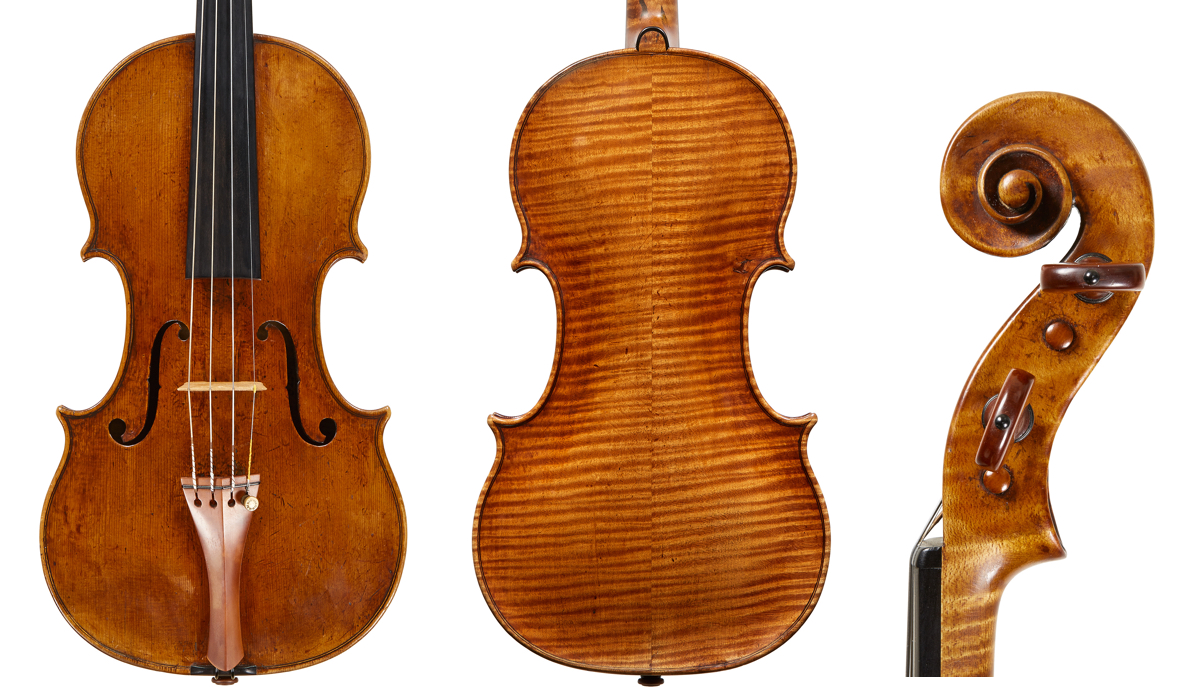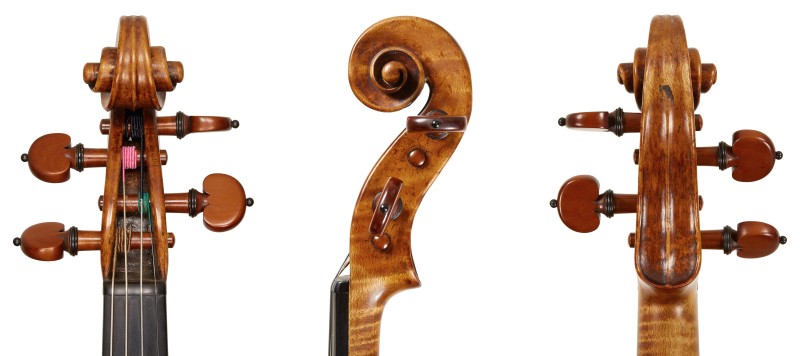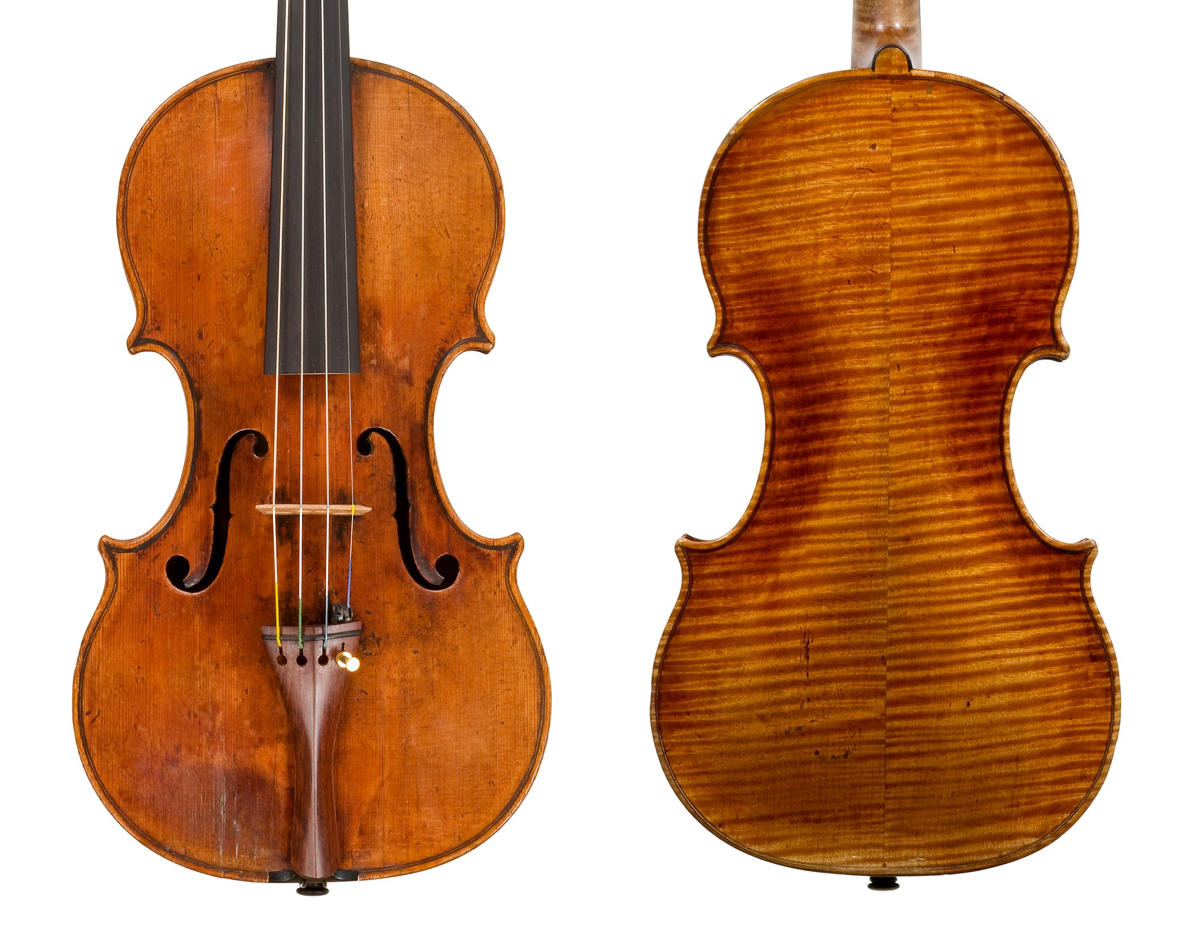The Amatis were for a long period the only noteworthy family of violin makers in Cremona. From the violin’s origin in the mid-1500s for over a century, nearly every violin built in Cremona came from the hands of a member of this family.
When Nicolò was born on December 3, 1596, his father, Girolamo, had been the master of the family’s workshop for some time. The founder, Andrea, had died in 1577, leaving the business to his two sons, but after slightly more than a decade they split and the old workshop was retained by the younger brother, Girolamo. The elder, Antonio, went on making instruments in a different shop not far from his brother’s, possibly specializing in lutes.

A very fine 1640s example of the early mature work of Nicolò Amati, showing the long and delicate appearance typical of the master in the first part of his career. Photos: Tarisio
More photosNicolò was at least the sixth child of his father, and four more were to follow. As soon as he was capable, Nicolò entered his father’s workshop as his pupil. He had two elder brothers, but one became a priest while the other enrolled in the army and died as a soldier in 1615. Another son of Girolamo was born in 1608 but died in his childhood. According to later documents, Girolamo had one more son, named Stefano, but his story and whereabouts remain unknown to us. As for the other branch of the family, Antonio apparently had neither sons nor heirs. Thus at the age of 20 Nicolò appears to have been the only member of the Amati family who could keep the old and successful business going. In truth, however, things were not so simple.
The increasing role of Nicolò in the workshop is suggested by many developments in the style of the instruments produced after 1615
In around 1615 Nicolò was working with his father and their instruments were labeled with the joint names of Girolamo and Antonio, though the latter had died a few years earlier. This label was probably intended as a commercial brand, and it is commonly found in Amati instruments from the following 15 years. The increasing role of Nicolò in the workshop is suggested by many developments in the style of the instruments produced in this period, changes we can hardly imagine originated from Girolamo, an old man at the end of his career. Moreover, the high quality and exquisitely clean finish of the work in these years are better associated with the presence of a young maker. While many details of the instruments remain similar to Girolamo’s work, such as the outline of the bodies and the f-hole models, Nicolò introduced more elongated corners and a different concept for the development of the archings, progressively less scooped inside the edges. He also started to prefer a maple of a different type from his father’s, with a more pronounced flame than the slab-cut maple often seen on Brothers Amati instruments.
The Amati shop was not the workplace of a lonely artisan: it was a successful business that gave work to a small number of people. Since Nicolò was the only male member of the family, they found a slightly unusual way to recruit more hands: the husbands of two of Nicolò’s sisters were associated to the business. Their names were Vincenzo Tili and Domenico Moneghini. Only a very few documents survive that refer to all of this, so it is impossible to understand completely how the workshop was run. Late in the 1620s, Tili was somehow working in the Amati workshop, probably not exactly as a business partner, but all of this was changed by what was one of the most significant events in the history of modern Europe: the epidemic of plague in the year 1630.

The 1640s violin retains its original neck, with the spiral carefully sculpted on a model designed by the Brothers Amati
Cremona was seriously affected. Many citizens died: in a few days at the end of October and beginning of November the disease led to the death of both Nicolò’s parents, Girolamo and his wife Laura, and two of their daughters. A couple of weeks later a notary was called during the night by Tili to dictate his last will a few hours before his death. The seriousness of the situation is underlined by the fact that when Elisabetta Amati, Girolamo’s sister, wanted to make her last testament, it was written by a notary not in her house but in the street in front of it: probably because he refused to go into the house for fear of the disease.
The plague was followed by a famine that caused more death and suffering. Nevertheless Nicolò Amati survived both plague and famine, and the workshop survived as well. It was in this period, if not before, that Domenico Moneghini was associated as a business partner. Together with Amati, Moneghini resolved some financial issues that Tili’s untimely demise had left behind, but the two brothers-in-law (Amati and Moneghini) were soon in serious disagreement, to the point that they divided their business. In the end the violin workshop remained in the possession of Amati, who gave Moneghini money and some other benefits, but this conclusion was reached only after two years of work, a noteworthy number of notarial acts and the action of friends and third parties called upon to arbitrate.

An Amati violin from around 1650. In developing his own style, Nicolò created instruments with a bolder appearance, yet never lacking the family’s hallmark elegance. Photos: Tarisio
More photosThe years following the plague were not the most productive for Amati, as can be expected: people were probably more interested in avoiding starvation than in music and musical instruments, and orders for luxury items such as Cremonese violins were not at the top of the list of expenses for noblemen and rich families. Judging by the surviving instruments, the output of the Amati workshop, quite substantial in the 1620s, was drastically reduced by the beginning of the following decade. But life gradually returned to normal, and the Amati was still the most illustrious violin workshop in Italy, and probably in the world.
It was at this point that Amati took the fundamental decision to hire assistants from outside the family circle. Documents recording the inhabitants of the Amati house exist only from 1641 onwards, but from the earliest year this list included young men who were living and working together with their master. At first these were two makers who later became successful in their own right: Giacomo Gennaro and Andrea Guarneri. While Gennaro lived with the Amatis for only a few more years, Guarneri became without doubt Amati’s main assistant. It is impossible to understand exactly what life was like in the Amati household and workshop; nevertheless we can easily imagine the perspective that Guarneri had in his dreams: he was the young and trusted right-hand man of a rich and famous maker, by then in his late 40s with no wife or children. But all of this was to end when in 1645, aged slightly less than 50, Amati married a woman named Lucrezia Pagliari.
In part 2 Carlo Chiesa continues the story of Amati’s career after his marriage and his development of the grand pattern violin.
Carlo Chiesa is one of the world’s foremost experts on golden era Italian violin making. He co-wrote The Stradivari Legacy with Duane Rosengard and was also a co-author of Guarneri del Gesu.